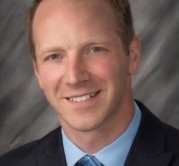Credit unions, are you ready for a rate hike?

Historically, the Fed has always had a way of “intentionally” starting rumors about their intentions regarding rate hikes, cuts, and maintaining the status quo. We can find humor in the inevitable resulting action they so subtly hinted at, yet we play the game of being surprised when they do.
According to various sources, the Fed is “teeing” up the rate increase in March, which will make it three years since the last increase, yet the longer view is what we can focus on as it pertains to our credit unions. This is due to the fact that it will not be the only rate change we will observe in the near future.
Federal Reserve Chairman Jerome Powell stated after the central bank’s first policy meeting of 2022, “will soon be appropriate to raise … the federal funds rate.”
In addition, as Paul Sanchez states, “If you don’t do something, and there are unexpected changes or expected changes in the rates, you can get beat up if the rates go up.” All of this signaling and posturing gives those that are diligent a time period in which we can assess our preparedness for these Fed indications. And, you guessed it, that leads to deposit discussions and what to do during a rising rate environment.
We say often, Treasury Management gives credit union CFOs, “levers to pull” when needing to make adjustments to interest rate risk plans and asset-liability management. Or stated another way, “The techniques we use and, as imperfect as asset-liability management is, it’s the best thing we have.” -Paul Sanchez.
The following is a list of steps to take to be ready to take advantage of the changes coming this year.
1. Be ready for Cross-selling Opportunities as those seeking increased deposit rates connect with the credit union.
We have been in a low-rate environment for over 10 years, and this move will generate a lot of excitement and activity for those sitting on deposits with poor rates. Having a full suite of treasury management products will allow you to attract and retain a greater wallet share of transaction banking and higher-cost deposits.
2. Offer your business members an account with Earnings Credits (an earnings credit rate ECR).
This type of account is not a new idea, yet it can give you additional levels of adjustment to your credit union Deposit Strategy. In many cases, you can already offer this on the current core you operate.
3. Be willing to offer a well-developed Exception Price Strategy.
It makes sense in many cases to reserve this flexibility in your prospecting and proformas. The ability and agility to satisfy specific pricing concerns can win the day.
4. Review your Current Deposit Offerings carefully for your business members.
There are pros and cons regarding the profitability and stability of deposits. We have CDs (which we all love the locked-in security benefit), yet members may favor the Money Market Investment Accounts (MMIA) now that there are few restrictions on the movement of funds in those accounts.
5. View your Lending Strategy through a changing rate environment lens. What will you do with the deposits once you have them?
You must have a plan to keep your credit union asset/liability ratios in balance. By what means can you accomplish this? For example, what type of lending do you want to target? Do you increase capacity and headcount to go out and make more commercial loans? Consider business team expansion and that your lenders need to be ready and able to capitalize on the increased deposits.
What is clear from the Fed’s signaling is that we must become aware of the coming changes in the rate environment and have an executable plan. Working from a plan will yield disproportionate benefits to those credit unions prepared for the change and have a set of Treasury Management and Business Service tools to accommodate business members and prospects. For Credit Unions, developing these strategies can seem like a daunting task yet we are ready to help. Learn more at Treasury Management Services | Tru Treasury.
Co-author: Jeff Ferguson, CTP, President, Great Lakes Association for Financial Professionals (GLAFP)

